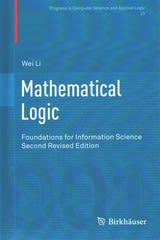
Before answering the question, comment what is being tested and show work
Chapter 7 AP Statistics Practice Test Section 1: Multiple Choice Select the best answer for each question. 17.1 A study of voting chose 663 registered voters at ran- dom shortly after an election. Of these, 72% said they proportion p of all students at that university who own had voted in the election. Election records show that an iPod. Suppose that, in fact, p = 0.80 at both schools. only 56% of registered voters voted in the election. Which of the following is the best conclusion? Which of the following statements is true? (a) We expect that the estimate from Johns Hopkins will (a) 72% is a sample; 56% is a population. be closer to the truth than the estimate from Ohio State because it comes from a smaller population. (b) 72% and 56% are both statistics. (b) We expect that the estimate from Johns Hopkins will (c) 72% is a statistic and 56% is a parameter. be closer to the truth than the estimate from Ohio d) 72% is a parameter and 56% is a statistic. State because it is based on a smaller sample size. (e) 72% and 53% are both parameters. (c) We expect that the estimate from Ohio State will be closer to the truth than the estimate from Johns 17.2 The Gallup Poll has decided to increase the size of its Hopkins because it comes from a larger population. random sample of voters from about 1500 people to about 4000 people right before an election. The poll (d) We expect that the estimate from Ohio State will is designed to estimate the proportion of voters who be closer to the truth than the estimate from Johns favor a new law banning smoking in public buildings. Hopkins because it is based on a larger sample size. The effect of this increase is to (e) We expect that the estimate from Johns Hopkins (a) reduce the bias of the estimate. will be about the same distance from the truth as the estimate from Ohio State because both samples are 3% (b) increase the bias of the estimate. of their populations. (c) reduce the variability of the estimate. T7.6 A researcher initially plans to take an SRS of size 160 from d) increase the variability of the estimate. a certain population and calculate the sample mean x. (e) reduce the bias and variability of the estimate. Later, the researcher decides to increase the sample size 17.3 Suppose we select an SRS of size n = 100 from a large so that the standard deviation of the sampling distribution of x will be half as big as when using a sample size of 160. population having proportion p of successes. Let p be What sample size should the researcher use? the proportion of successes in the sample. For which value of p would it be safe to use the Normal approxi- (a) 40 (d) 640 mation to the sampling distribution of p? ( b) 80 (e) There is not enough information to (a) 0.01 (d) 0.975 (c) 320 determine the sample size. b) 0.09 (e) 0.999 17.7 The student newspaper at a large university asks an (c) 0.85 SRS of 250 undergraduates, "Do you favor eliminating the carnival from the term-end celebration?" All in all, 17.4 The central limit theorem is important in statistics 150 of the 250 are in favor. Suppose that (unknown to because it allows us to use a Normal distribution to you) 55% of all undergraduates favor eliminating the find probabilities involving the sample mean if the carnival. If you took a very large number of SRSs of a) sample size is sufficiently large (for any population). size n = 250 from this population, the sampling distri- ers (b) population is Normally distributed ( for any sample size). bution of the sample proportion p would be (c) population is Normally distributed and the sample size (a) exactly Normal with mean 0.55 and standard deviation 0.03. ers is reasonably large. om d population is Normally distributed and the population (b ) approximately Normal with mean 0.55 and standard deviation 0.03. standard deviation is known (for any sample size) el population size is reasonably large (whether the (c) exactly Normal with mean 0.60 and standard deviation the 0.03. bul- population distribution is known or not). (d) approximately Normal with mean 0.60 and standard 17.5 The number of undergraduates at Johns Hopkins Uni- deviation 0.03. versity is approximately 2000, while the number at Ohio State University is approximately 60,000. At both schools, (e) heavily skewed with mean 0.55 and standard deviation 0.03. a simple random sample of about 3% of the under- graduates is taken. Each sample is used to estimate the








